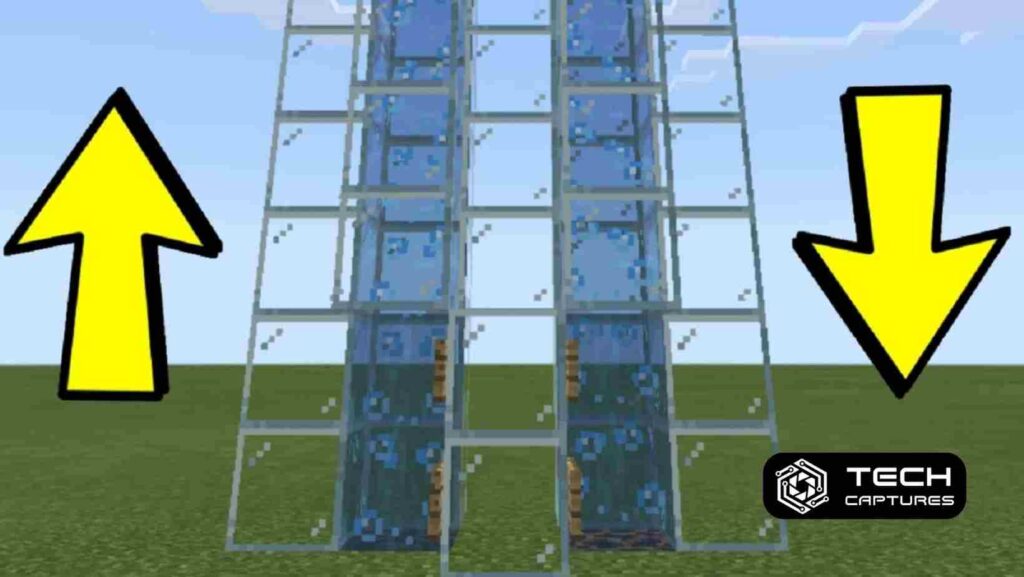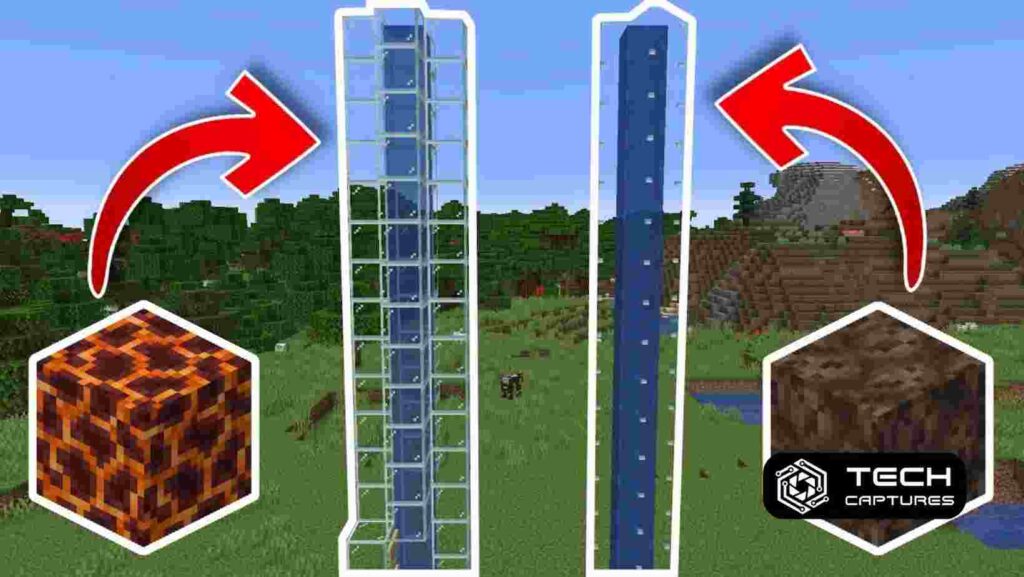What is a Water Elevator and Why Do You Need it in Minecraft? In the vast, blocky world of Minecraft, vertical transportation can be a real challenge, especially when dealing with towering structures or underground bases. This is where the water elevator comes into play – a simple yet ingenious mechanism that allows you to move up and down quickly and efficiently. Whether you’re a seasoned builder or a newcomer to the game, how to make a water elevator in minecraft will undoubtedly enhance your Minecraft experience.
Table of Contents
How to Build an Upward Water Elevator Using Soul Sand

- Constructing the Elevator Shaft: The first step in creating an upward water elevator is to build a vertical shaft. This shaft can be made from any block of your choice, but glass is a popular option due to its transparency, allowing you to see the elevator in action. The shaft should be one block wide.
- Placing the Water Source: At the top of the shaft, place a single water source block. This will cause the water to flow downwards, creating the foundation for your elevator.
- Converting to Source Blocks with Kelp: To ensure the elevator functions smoothly, you need to convert the flowing water into water source blocks. This is where kelp comes into play. Start by placing a kelp block at the bottom of the shaft, then continue stacking kelp all the way to the top. As you place each kelp block, the flowing water will automatically transform into a water source block.
- Adding the Soul Sand: Once you’ve successfully converted the entire water column into source blocks using kelp, break the bottom-most kelp block to remove kelp as the whole stack. Then, replace the bottom block of the shaft with a soul sand block. This will create a column of upward-facing bubble streams, propelling entities (like yourself or items) toward the top of the elevator.
How to Build a Downward Water Elevator Using Magma Blocks
- Constructing the Elevator Shaft: Similar to the upward water elevator, you’ll need to build a vertical shaft for your downward elevator. The shaft should be one block wide.
- Placing the Water Source: At the top of the shaft, place a single water source block, allowing the water to flow downwards.
- Converting to Source Blocks with Kelp: Just like the upward elevator, you’ll need to convert the flowing water into water source blocks using the kelp method.
- Adding the Magma Block: After converting the water column into source blocks, replace the bottom block of the shaft with a magma block. This will create a downward-facing bubble stream, pulling entities towards the bottom of the elevator.
Tips and Tricks for Using Water Elevators
- Entry and Exit Points: To enter the upward elevator from the bottom, walk into the bubble stream created by the soul sand. For exiting at the top, ensure there’s a platform or space to step out onto. For the downward elevator, jump into the bubble stream created by the magma block to descend quickly.
- Avoiding Damage from Magma Blocks: To prevent damage from the magma block at the bottom of a downward elevator, you can place a sign or use a trapdoor mechanism to block direct contact while still allowing entities to pass through.
- Multi-Level Elevators: For elevators stopping at multiple floors, consider designing separate shafts for each level or using a more complex Redstone mechanism to control the water flow.
What if I Want a Two-Way Elevator
If you’re looking for a more advanced setup, you can create a two-block-wide elevator with soul sand and magma blocks at the bottom. This will allow for both upward and downward movement within the same shaft, providing a convenient two-way transportation system.
Why is Kelp Crucial for Water Elevators
Kelp plays a vital role in the construction of water elevators because it has the unique ability to convert flowing water into water source blocks upon placement. Without kelp, the water would continue to flow, making it impossible to create the necessary bubble streams for the elevator to function properly.
Can I Customize the Design of My Water Elevator
Absolutely! While functionality is the primary concern when building water elevators, you can absolutely customize the design to fit the aesthetics of your Minecraft world. Glass blocks are a popular choice for their transparency, but any solid block will work. Get creative and make your water elevator a visually stunning addition to your build.
How to Optimize Your Water Elevator for Maximum Efficiency
To ensure your water elevator operates at maximum efficiency, consider the following tips:
- Minimize Turns and Corners: Water flows smoothly in a straight line, so try to minimize the number of turns and corners in your elevator shaft. This will reduce the risk of water getting stuck or behaving unexpectedly.
- Maintain Proper Water Flow: Regularly check the water flow in your elevator and make any necessary adjustments. If the water stops flowing or becomes obstructed, it may disrupt the elevator’s functionality.
- Use Appropriate Block Placement: When placing soul sand or magma blocks, ensure they are positioned correctly at the bottom of the shaft to create the desired bubble stream.
- Consider Redstone Mechanisms: For more complex elevator designs or multi-level systems, you may want to incorporate redstone mechanisms to control the water flow and improve overall efficiency.
(FAQs) How To Make a Water Elevator in Minecraft
Can I use water elevators to transport mobs?
Yes, water elevators can transport mobs, players, and items. However, be cautious when transporting hostile mobs, as they may attack you upon exiting the elevator.
Do water elevators work in the Nether or End dimensions?
Unfortunately, water elevators do not function in the Nether or End dimensions, as water cannot naturally exist in these environments.
Can I build a water elevator underwater?
Yes, it is possible, but the mechanics may differ slightly. You’ll need to ensure the water source blocks are properly placed and that the elevator shaft is sealed to prevent water from leaking out.
How tall can I make a water elevator?
In theory, there is no height limit for water elevators in Minecraft. However, more towering elevators may experience performance issues or water flow problems, so it’s generally recommended that they be kept at a reasonable height.
Can I use other blocks instead of soul sand or magma blocks?
No, soul sand and magma blocks are the only blocks that can create the necessary bubble streams for water elevators to function correctly. Other blocks will produce a different effect.
By following these guidelines and tips, you’ll be well on your way to how to make a water elevator in Minecraft, making vertical transportation a breeze and adding a touch of ingenuity to your gameplay experience.

